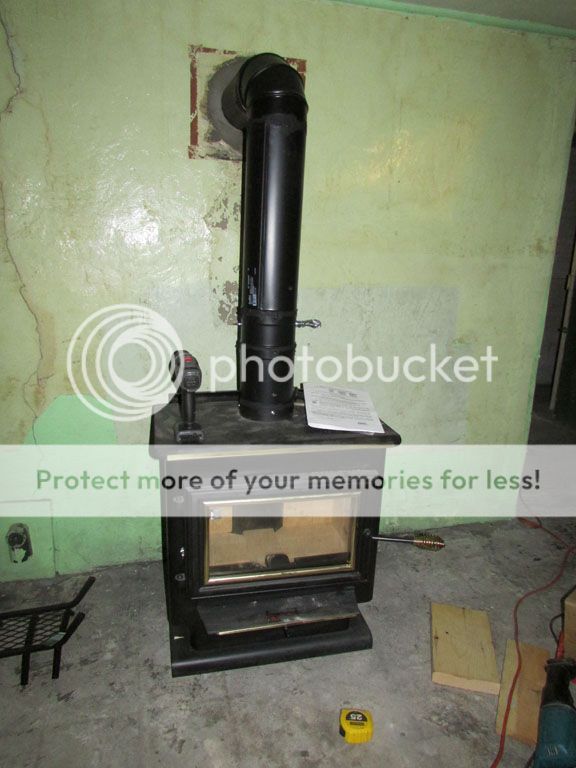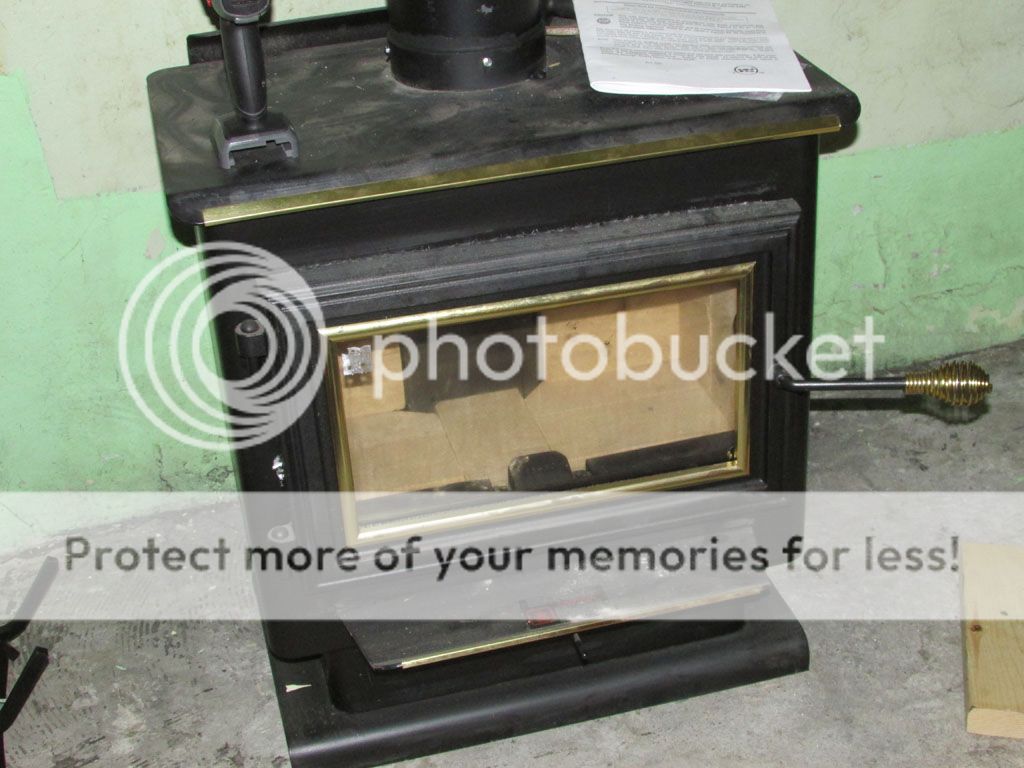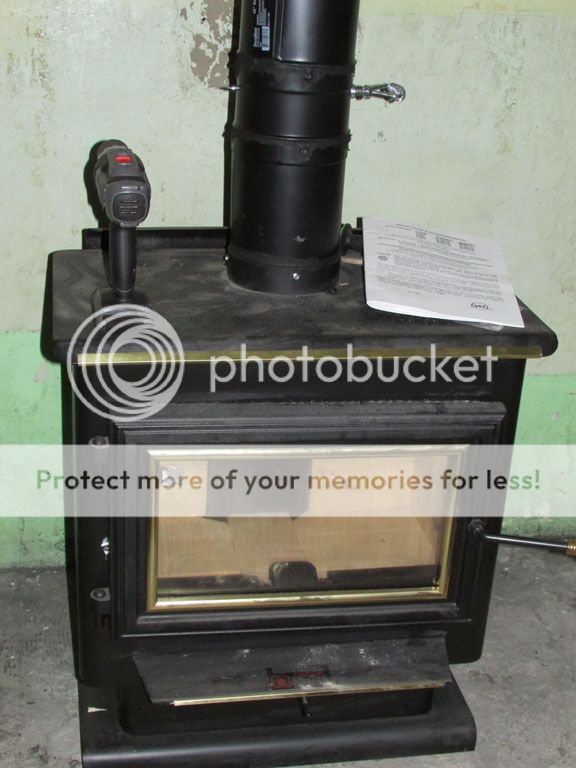Ok so me and my hubby just got a wood burner to help with heat this winter. We got our house last spring and down in the basement was this hole in the wall that led up to the roof through the chimney. So anyways we were gonna run a pipe down the existing chimney but found that it has a ledge or something in it so we couldn't but when my hubby was putting the chimney cleaner down the chimney to test which of the four we were looking for he kept hitting like blockage and huge amounts of what looked to be coal would come tumbling down out of the chimney. Eventually he ran out of pole and we figured we had found the right hole and he even did a smoke test by burning some corn stalks to see if the smoke was clearing the chimney and it was but that doesn't ease my concern. I am afraid that there may still be loads of coal or whatever was falling from the inside of our chimney and that it may be unsafe to use until its been assessed by a inspector but my hubby thinks it will be fine. I tried to look on the internet for a similar problem with large amounts of soot or coal including lumps falling from the chimney but couldn't find anything. So my question is does anyone know why my chimney would have this problem, is it a dangerous problem and do you think we should use it or get an inspection done first?
Chimney Question...
- Thread starter o0_Rayne_0o
- Start date
-
Active since 1995, Hearth.com is THE place on the internet for free information and advice about wood stoves, pellet stoves and other energy saving equipment.
We strive to provide opinions, articles, discussions and history related to Hearth Products and in a more general sense, energy issues.
We promote the EFFICIENT, RESPONSIBLE, CLEAN and SAFE use of all fuels, whether renewable or fossil.
You are using an out of date browser. It may not display this or other websites correctly.
You should upgrade or use an alternative browser.
You should upgrade or use an alternative browser.
- Status
- Not open for further replies.
Welcome. Your concerns are valid, dear hubby is wrong. It is not safe to start up an unknown chimney with any sort of blockage in it. If that blockage is creosote it could ignite and cause a very serious, house-threatening chimney fire. You need a professional sweep to unplug the chimney and to inspect it for safety. If there are cracked tiles in the chimney or no liner at all it is going to need stainless liner. Stick with us here. We just want you to be heating safely.
To find a professional sweep in your area go to either of these websites and type in your zip code:
www.csia.org and www.ncsg.org
PS: Do you already have a few cords of well seasoned wood on hand? If not, that is going to be another challenge and we haven't begun to discuss stoves.
To find a professional sweep in your area go to either of these websites and type in your zip code:
www.csia.org and www.ncsg.org
PS: Do you already have a few cords of well seasoned wood on hand? If not, that is going to be another challenge and we haven't begun to discuss stoves.
Welcome. Your concerns are valid, dear hubby is wrong. It is not safe to start up an unknown chimney with any sort of blockage in it. If that blockage is creosote it could ignite and cause a very serious, house-threatening chimney fire. You need a professional sweep to unplug the chimney and to inspect it for safety. If there are cracked tiles in the chimney or no liner at all it is going to need stainless liner. Stick with us here. We just want you to be heating safely.
To find a professional sweep in your area go to either of these websites and type in your zip code:
www.csia.org and www.ncsg.org
PS: Do you already have a few cords of well seasoned wood on hand? If not, that is going to be another challenge and we haven't begun to discuss stoves.
Thanks, I am worried about the chimney. He works night shift so I spend a lot of time alone at home and we have a 2 year old daughter as well. As for wood he spent most of the fall out on the family farms cutting dead trees so we have some wood but not enough for the winter yet. About a pile maybe 5 foot high so far.
Dead wood very often can be damp on its interior. We have several people already complaining about poor stove performance that instead ended up not being the stove but instead the standing dead wood recently split.
The chimney being safe and sound is essential to your family's safety. Hubby gets kudos for trying to do it himself, but this is a case where spending $100 is a wise investment. If the chimney is flawed this may save a life.
The chimney being safe and sound is essential to your family's safety. Hubby gets kudos for trying to do it himself, but this is a case where spending $100 is a wise investment. If the chimney is flawed this may save a life.
me and my hubby just got a wood burner to help with heat this winter.
What wood burner did you just get, and how, exactly, do you intend to install it into your house?
Well here are some pics of how he put it in and what it looks like. It was brand new from Home Depot, it had been the display model for 2 years so we only paid $160 for it. No rust or anything, bricks are nice and light in color from non use.






Sprinter
Minister of Fire
I can't comment on the installation, but you sure did good on a 13 NC for $160.
You must get the chimney and all inspected for sure. No telling what that stuff was, but good chance it's a serious buildup of creosote.
You must get the chimney and all inspected for sure. No telling what that stuff was, but good chance it's a serious buildup of creosote.
Yeah that is what I am worried about. The Wood Burner was originally priced at I think $700 or $800 I can't remember. We had gone into Home Depot for some insulation and saw it and for the price we just couldn't pass it up.
P.S. What is a 13 NC?
P.S. What is a 13 NC?
Sprinter
Minister of Fire
It's the model of Englander stove. Very popular here and highly regarded, especially for the price, even the retail price.P.S. What is a 13 NC?
Those dampers can be useful on a system that has a very powerful draft that needs taming, but they're usually not needed at all. Keep it open until you find out if you need it.I doubt you will need to or even should use that pipe damper.
Our neighbor recommended getting the Damper, I have no idea my hubby is the one doing all the work and decision making.
P.S. What is a 13 NC?
That is the stove model. It is an Englander 13-NC but is also sold as a Timber Ridge or Summers Heat stove. All the same stove.
Sprinter
Minister of Fire
It won't hurt anything as long it's not restricting when fully open.Our neighbor recommended getting the Damper, I have no idea my hubby is the one doing all the work and decision making.
The pipe damper won't hurt anything. Just run it with it open unless you run into a situation where draft is too strong to control the burn. And if you use it be sure to open it before you open the stove door for any reason or you will get a face full of smoke.
I feel like he did a really good job at putting the pipe together and all but like I said my main concern is the chimney. I know we can afford a couple hundred for a cleaning and ispection but now that we have the pipe in the wall how do we go about cleaning it or do we have to take the pipe back out?
I found the stove originally from Home Depot
http://www.homedepot.com/p/Englander-1-800-sq-ft-Wood-Burning-Stove-13-NCH/100157775#.UoBOO-JadRw
http://www.homedepot.com/p/Englander-1-800-sq-ft-Wood-Burning-Stove-13-NCH/100157775#.UoBOO-JadRw
Sprinter
Minister of Fire
I don't think they've changed any in a few years. Like he said, you stole it. Good job.I found the stove originally from Home Depot
http://www.homedepot.com/p/Englander-1-800-sq-ft-Wood-Burning-Stove-13-NCH/100157775#.UoBOO-JadRw
 I'm very surprised you found that at this time of year.
I'm very surprised you found that at this time of year.
Last edited:
Well it was around prob Sept that we found it, and thats what all our neighbors said too. We were just ecstatic. Last year our oil furnace had a series of issues and the final one was the blower motor went out on it. We replaced it and then filled the tanks up, spent like $1000 in fuel and less then 3 weeks later it was gone. I don't know what is wrong with the furnace but we spent a majority of last winter with our house at 50-60 degrees. Was very cold and hard to deal with especially having a baby. We own a duplex, its roughly 2500 sq ft. We had 4 space heaters last year to heat both sides... one in the basement, one in the livingroom, one in the bathroom and one in our bedroom. We spent a lot of our time in our bedroom we shut the door and hibernated haha but about a week before we found this stove we shelled out $600 on an electric fireplace/ent center combo that heats up to 1000 sq ft and when we found this stove it was great, I just dont wanna die over it lol
Yes please, please get that chimney inspected. And yes the pipe will need to be disconnected for that. But that is easy.
The stove appears to be in an un-insulated basement so don't expect to get a lot of heat into the living area. The basement walls and floor soak up a ton of heat and it is a fairly small wood stove. A great lil stove, but small all the same.
The stove appears to be in an un-insulated basement so don't expect to get a lot of heat into the living area. The basement walls and floor soak up a ton of heat and it is a fairly small wood stove. A great lil stove, but small all the same.
Sprinter
Minister of Fire
Regarding the wood, these modern EPA stoves have to have wood that is dried to a particular level, that being about 20% moisture content. Much more that that invites a lot of problems. The problem with dead trees is that with the bark still on, they never really get a chance to dry. The wood has to be split and stacked in the open to dry. The amount of time required depends on the species and your climate, etc.
I would urge you to get a moisture meter and when you split that wood open, apply the pins to a fresh face. Then you'll know if it's ready. If not, you will have to take some steps. Here's an example: http://www.harborfreight.com/catalogsearch/result?q=moisture meter
There are others available but no need to spend over $20 on one.
I would urge you to get a moisture meter and when you split that wood open, apply the pins to a fresh face. Then you'll know if it's ready. If not, you will have to take some steps. Here's an example: http://www.harborfreight.com/catalogsearch/result?q=moisture meter
There are others available but no need to spend over $20 on one.
Last edited:
Grisu
Minister of Fire
Yes please, please get that chimney inspected. And yes the pipe will need to be disconnected for that. But that is easy.
The stove appears to be in an un-insulated basement so don't expect to get a lot of heat into the living area. The basement walls and floor soak up a ton of heat and it is a fairly small wood stove. A great lil stove, but small all the same.
I agree with BB here. You may be really disappointed about that stove sitting in the basement. First, it is rather small, maybe good to heat ~1000 sqft of insulated space. Second, it is installed in an uninsulated basement. I fear you will hardly notice a difference with the stove although you will need to reload it every 4 to 5 hours. Is that chimney going through the upstairs living area? Any way that you can place the stove there with the pipe going into the chimney? If you have a sweep coming over anyway I would ask for that.
Regarding the wood: See if your hubby can separate the upper parts of those dead trees from the lower main trunk. Those high up parts are more likely to be at least partially dry. You may also want to invest in a moisture meter. This here is less than $20 including shipping and does the job: http://www.harborfreight.com/digital-mini-moisture-meter-67143.html
Sprinter
Minister of Fire
It's true about the basement walls and floor soaking up heat. Would it be possible to insulate the walls? Are you planning to eventually finish the basement for living space?
We don't want to spoil your enthusiasm, but we do want to see you happy with the results.
The positive side of the concrete floor is that you don't need to install an insulated hearth which you would otherwise have to for this model stove.
We don't want to spoil your enthusiasm, but we do want to see you happy with the results.
The positive side of the concrete floor is that you don't need to install an insulated hearth which you would otherwise have to for this model stove.
We don't plan on finishing the basement, the ceiling is already really low and the moisture would prob cause mold growth on any insulation/walls we would install. Whoever owned the house in the past actually installed cabinets down there and when we had the home inspected for the mortgage the guy said that those cabinets are full of mold and not to touch them that as long as we leave them alone they are fine because the mold is inactive but that to have them removed it would take special care. Our neighbors all have the exact same layout of house and wood burners and they said they get plenty of heat from their burner in the basement so that is what we were going off of. We actually have 4 seperate chimney's in one chimney. One hole goes to the basement, one to the livingroom, one to the kitchen and one to the bedroom.
My only comment on the stove connection is that he mixed up the crimp connections. They should all be pointed down, toward the stove. This is so that any creosote drips head back into the firebox instead of down the outside of the pipe.
I told him I thought that too but he said no lol because the bottom piece of pipe just was not fitting so I thought he had it upside down.
We actually have 4 seperate chimney's in one chimney. One hole goes to the basement, one to the livingroom, one to the kitchen and one to the bedroom.
I'd have four stoves

- Status
- Not open for further replies.
Similar threads
- Replies
- 14
- Views
- 919
- Replies
- 12
- Views
- 815
- Replies
- 18
- Views
- 1K
- Replies
- 8
- Views
- 889

